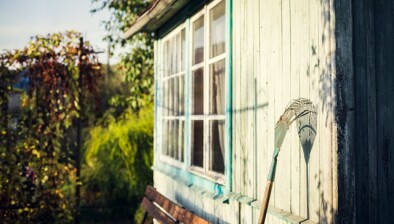Begbies Traynor: Why the housing market is protected during lockdown 3.0

As mainland Scotland entered the third coronavirus lockdown under national guidelines, the housing market braced itself for another slowdown following attempts to catch up due to the four-month shut down which commenced in March 2020. To restart the housing market, encourage vendors to increase their selling appetite and push buyers to continue interacting with estate agents, special guidance and legislative changes were unveiled.
As Scotland entered the Covid-19 level system, guidance around the house-hunting process was announced to allow for safer house sales and purchases. Virtual valuations were recommended to help reduce Covid-19 transmission rates and keep the industry in operation. As an estimated 400,000 property transactions stopped in their tracks due to Covid-19, according to property site, Zoopla, settling the disruption caused by the first lockdown is essential, writes Sharon McDougall of Scotland Debt Solutions.
Covid-19 protections for the housing market
As the housing market in England restarted before Scotland, it was evident that the reopening of the industry in Scotland would also experience a similar mini-boom due to the release of pent-up demand. As the legally enforceable stay-at-home order imposed by the Scottish government disrupted operations and resulted in supply chain delays, property transactions remained jammed in the waiting list as lenders faced a backlog of mortgage applications awaiting approval. As economic uncertainty resulted in mainstream lenders to withdraw high loan-to-value products in March 2020, banks and mortgage providers are only now showing signs of easing borrowing restrictions.
Assessing the current situation and moving along the supply chain, surveyors and residential property solicitors are overwhelmed with a backlog of sales, contingent on the upcoming stamp duty holiday deadline on 31 March 2020. Estate agents are also experiencing significant changes to working life as property viewings are being executed virtually to protect parties at each end of the transaction. Lack of previous protections for the housing market during lockdown 1.0 resulted in a sharp delay in the construction of new builds, triggering a catalyst of disruption for prospective homeowners across Scotland.
The Scottish Government confirmed that the Land and Building Transaction Tax (LBTT) threshold, Scotland’s equivalent to the UK’s Stamp Duty Land Tax (SDLT), would be raised from £145,000 to £250,000 until 31 March 2021. To compensate for losses incurred during the first Covid-19 lockdown, the LBTT change is triggering a surge in sales, despite a rapidly looming deadline. Mortgage deferrals have also been extended to this date to minimise the risk imposed to the housing sector and provide relief to individuals suffering from serious financial loss because of the coronavirus pandemic.
Post-lockdown 1.0 property boom
As the stay-at-home order restricts movement, more homeowners are reviewing their living conditions during the coronavirus pandemic. Scotland’s property market is experiencing unprecedented demand, leading to average prices to increase by 7.0% in the year to November 2020, up from 6.3% in October 2020. As the number of people working from home increases, more individuals are looking to move into homes with greater office space and outdoor areas. As more people arrive at the realisation that working from home can be embraced permanently, demand for housing is feeding the boom in property sales.
Government housing target delayed
The Scottish Government pledged to deliver 50,000 affordable homes, including 35,000 homes for social rent between 2016/17 to 2020/21. By December 2019, 22,386 new build homes were completed across all sectors in Scotland. The pressure remains on the Scottish Government to build the remaining half, as pledged; however, Covid-19 may likely hamper progress. During April to June 2020, only 197 affordable houses reached completion, marking a decrease of 84%. As construction and mortgage approvals continue to experience severe delays which pushes back new build start dates, the target is far from reaching fulfilment.
As locking down the market once again could stagger the growth of the housing market and delay new housing targets, it is in the best interests of all the parties involved to contribute and keep the market buoyant.







